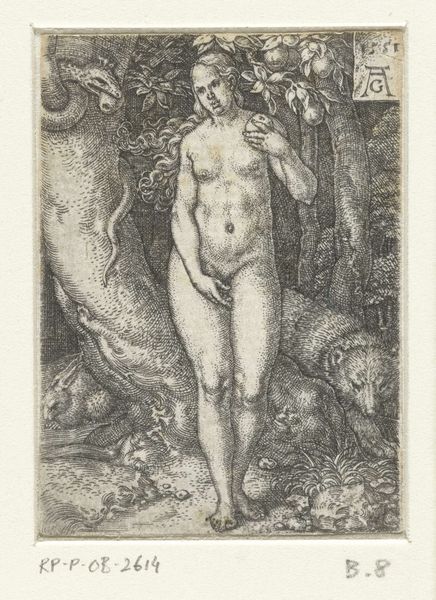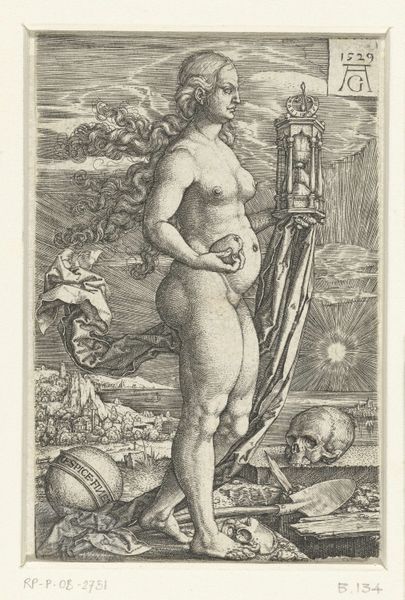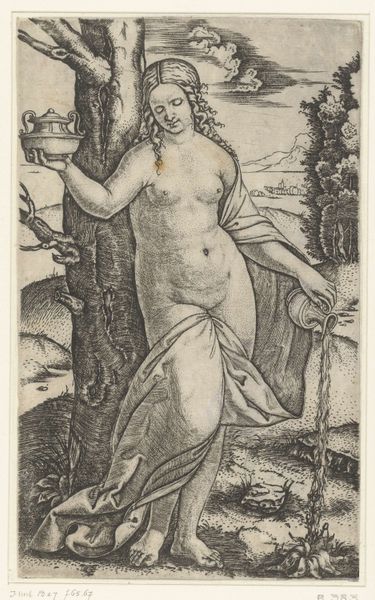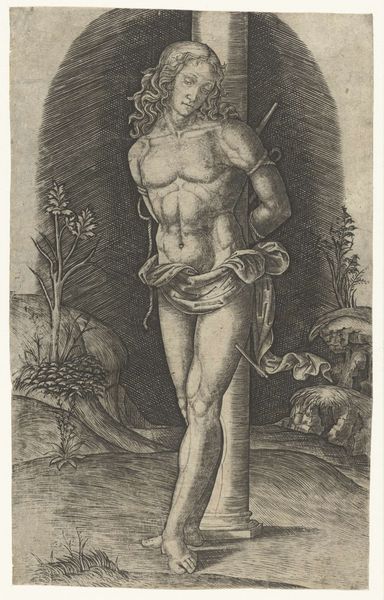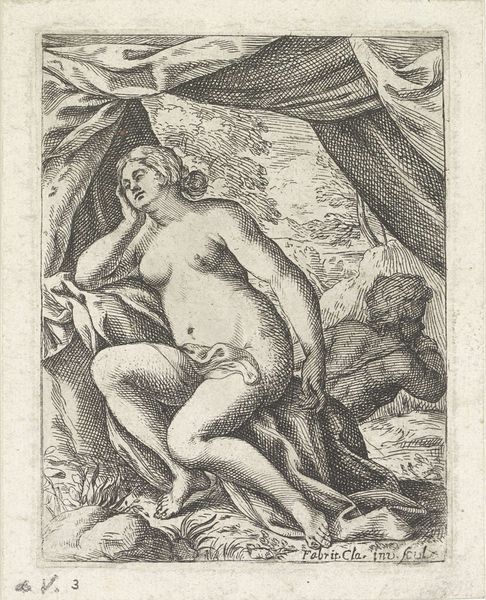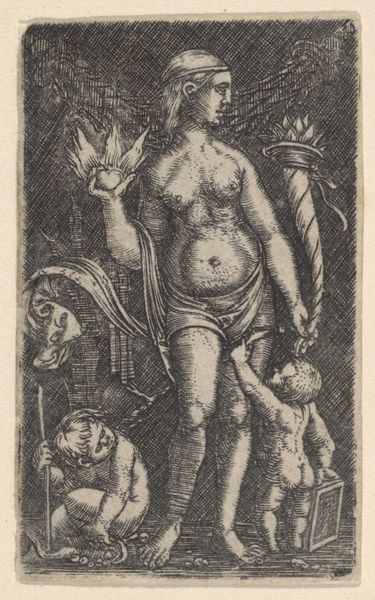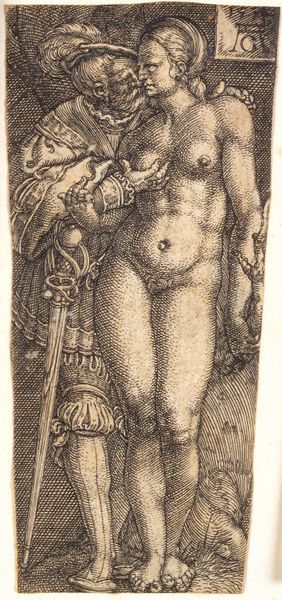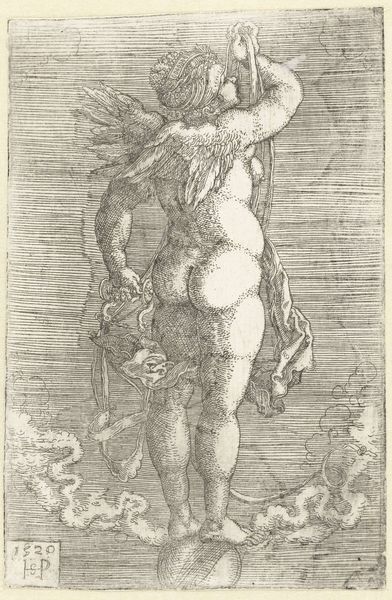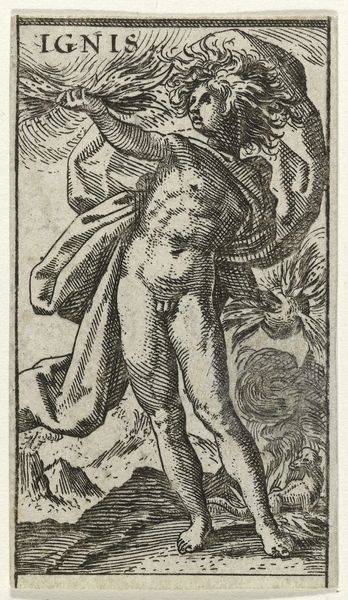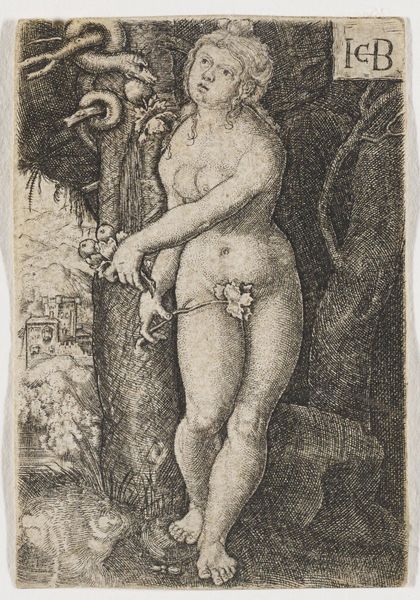
Dimensions: height 80 mm, width 56 mm
Copyright: Rijks Museum: Open Domain
Editor: This engraving, titled "Eva," was created by Heinrich Aldegrever in 1529 and it’s held at the Rijksmuseum. It feels very intricate, almost claustrophobic, with so much detail packed into a small space. What compositional elements strike you most when you look at it? Curator: The stark contrasts of light and shadow are immediately arresting. Observe how Aldegrever meticulously crafts depth through the density of line work. Notice, also, the figure of Eva: the modeling of her form is rendered through a network of hatching and cross-hatching, a veritable tapestry of engraved lines. What effect does this linearity have on your perception of the figure? Editor: It makes her feel less sensual, somehow, more like an intellectual exercise in representing form than a celebration of the human body. The animals seem more alive. Curator: Precisely. The engraving foregrounds technique. The symbolic weight traditionally associated with the subject matter, such as the serpent and the apple, takes a backseat to the artist's skill in manipulating the medium. Consider, too, the balance: Eva stands centrally, framed by the darker textures of the background, asserting a certain formal dominance within the composition. Editor: So, it's less about the story of Eve and more about showing off what engraving can do? The medium becomes the message? Curator: In a sense, yes. While the narrative is undeniably present, the engraving invites us to analyze the formal strategies at play. It's a dialogue between subject and execution, where the artist's technical prowess takes center stage. What are your thoughts? Editor: That gives me a fresh appreciation for the artist's technique! It’s easy to overlook that detail and focus on the subject. Thanks for pointing that out! Curator: A valuable observation indeed.
Comments
No comments
Be the first to comment and join the conversation on the ultimate creative platform.
